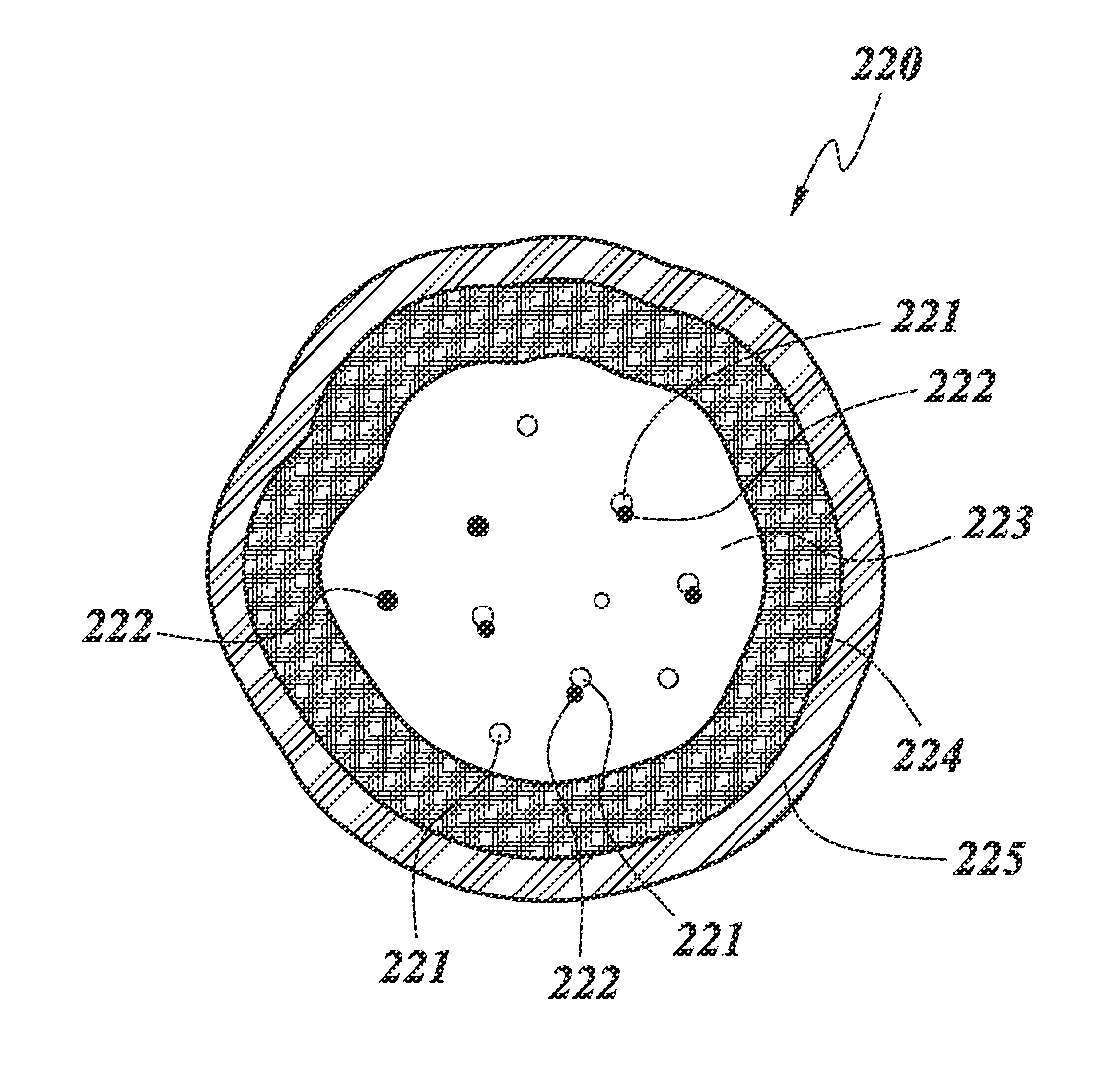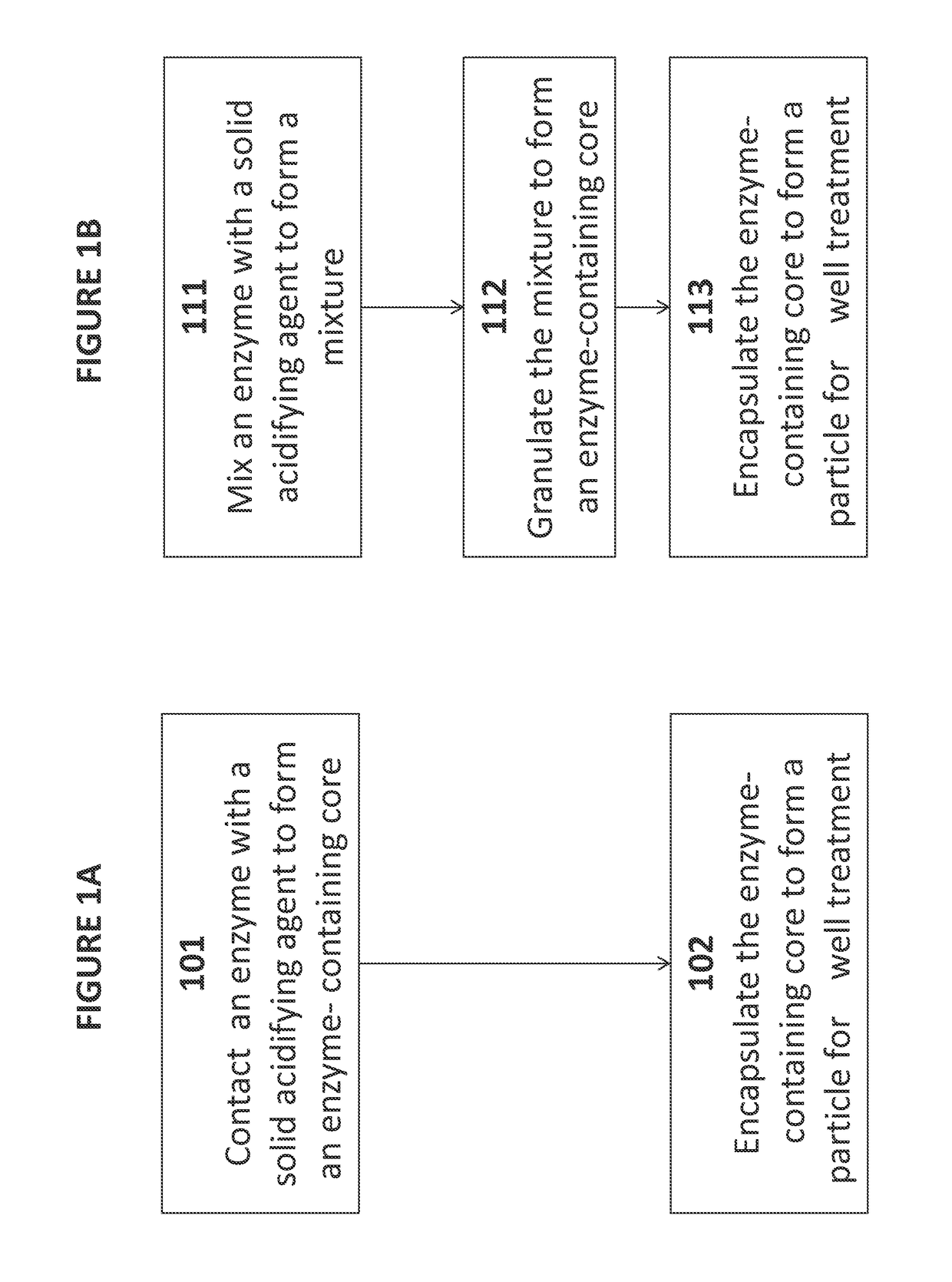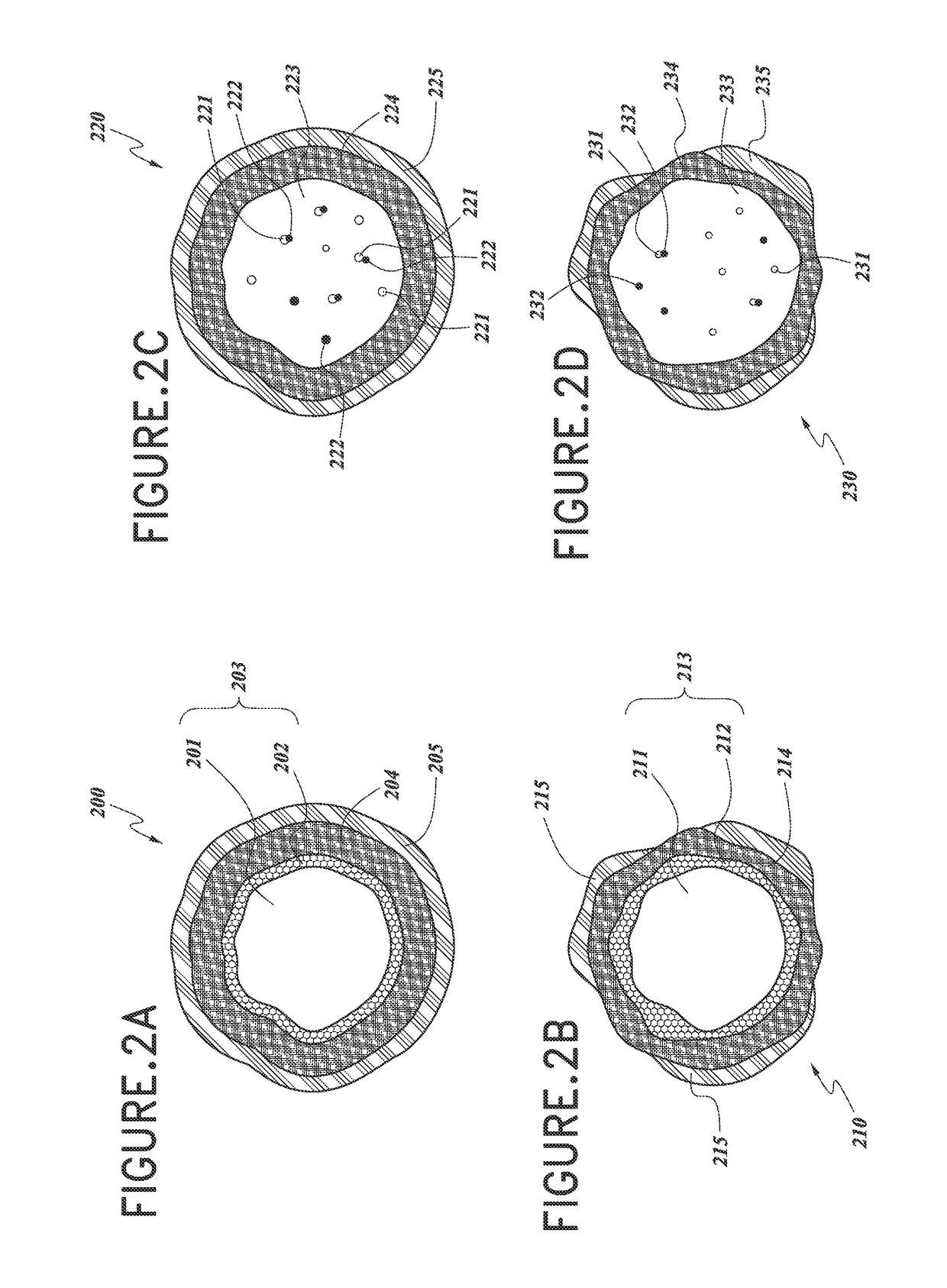Controlled break enzyme formulations
a technology of enzymes and formulations, applied in the field of enzyme formulations, can solve the problems of unreliability of known techniques, premature incomplete breaking of gelled fracturing fluid, etc., and achieve the effect of reducing the viscosity of the well treatment fluid
- Summary
- Abstract
- Description
- Claims
- Application Information
AI Technical Summary
Benefits of technology
Problems solved by technology
Method used
Image
Examples
example 1
Enzyme and Various Acidifiers
[0160]Rheology studies were performed using guar solutions with the addition of various acidifiers (ethyl acetoacetate ester, ammonium sulfate, citric acid) and the cellulase enzyme embodied by SEQ ID NO: 2 in liquid form. A control assay was performed with guar solution and the enzyme embodied by SEQ ID NO: 2 only. Guar gum at 25 pptg was hydrated in water for 45 min by vigorous stirring, followed by the addition of surfactant, clay stabilizer, and pH adjuster to reach pH=10.5. Upon addition of delayed cross-linker, the enzyme and acidifiers were added at following final concentrations: a) 6 mU / mL Enzyme+5 mM Ester (ethyl acetoacetate); b) 6 mU / mL Enzyme+2.5 mM ammonium sulfate; c) 6 mU / mL Enzyme+2.5 mM citric acid; d) (Control) 25 mU / mL Enzyme, with no other additions. Viscosity was measured using low pressure viscometer, at 167° F., with ˜15 min temperature ramping. Complete break of guar was examined by pouring test at ambient temperature (broken gua...
example 2
Acidifiers Reverse Guar Cross-Linking but Do Not Break Guar to a Complete Break
[0161]To test the influence of acidifiers (without enzyme) upon guar rheology, rheology studies were performed in the absence of enzyme as described in Example 1, and at 2.5 mM final concentration (broken lines). The positive control (solid lines) was guar treated with both acidifier (2.5 mM) and enzyme (6 mU / mL). The negative control (gray line) was guar treatment with enzyme alone (25 mU / mL). Although acidifiers decreased guar viscosity, the guar in these samples did not reach a complete break in the absence of enzyme. The results are shown in FIG. 4. Acidifiers shifted the equilibrium from cross-linked guar to linear guar (non-cross-linked) due to a change in the environmental pH (from initial pH˜10.5 to final pH˜7.2-9, see FIG. 5-7).
example 3
Acidifier Levels Required for Complete Break
[0162]In order to calculate the optimal concentrations of enzyme and acidifiers necessary to completely break guar, studies like in Example 1 were carried out using enzyme concentrations of 0.7-25 mU / mL and acidifier concentrations between 0.67 mM-5 mM. Acidifiers used for this example were Ammonium Sulfate, Sodium Phosphate Monobasic, and Citric Acid. Complete break of guar was examined by pouring test at ambient temperature (broken guar displayed viscosity<6 cP). Final pH was recorded to establish the impact of the acidifier on the guar pH. Results are displayed in FIGS. 5, 6, and 7. The optimal concentrations were used to design the ratios between enzyme and the acidifier used as a carrier in the encapsulated sample.
PUM
| Property | Measurement | Unit |
|---|---|---|
| temperature | aaaaa | aaaaa |
| temperature | aaaaa | aaaaa |
| elevated temperature | aaaaa | aaaaa |
Abstract
Description
Claims
Application Information
 Login to View More
Login to View More - R&D
- Intellectual Property
- Life Sciences
- Materials
- Tech Scout
- Unparalleled Data Quality
- Higher Quality Content
- 60% Fewer Hallucinations
Browse by: Latest US Patents, China's latest patents, Technical Efficacy Thesaurus, Application Domain, Technology Topic, Popular Technical Reports.
© 2025 PatSnap. All rights reserved.Legal|Privacy policy|Modern Slavery Act Transparency Statement|Sitemap|About US| Contact US: help@patsnap.com



